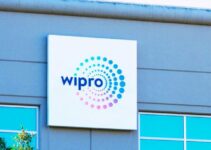Procter & Gamble (P&G) is a consumer goods manufacturing American multinational company. James Gamble and William Procter founded the company in 1837. Today, we’ll discuss the value chain analysis of P&G supply chain analysis; primary and supporting activities in the process of value chain analysis Example Company. They are inbound and outbound logistics, operations, marketing, and customer service; infrastructure, HRM, technology, and procurement as an application of the value chain analysis process.
Suppliers and Vendors of Procter & Gamble (P&G)
- International Dehydrated Foods
- Archer Corporate Services
- Columbia Machine
- Diamond Packaging
- Emerson Process Management
- Evonik Industries
- Goindustry Dovebid
- Havpak
- Hyco
- Jones Lang LaSalle
- Ketchum
- Mabuchi Motors
The Value chain analysis of P&G supply chain analysis would analyze the primary and supporting activities in the process of value chain analysis. They’re inbound and outbound logistics, operations, marketing, and services; infrastructure, HRM, technology, and procurement. Here’s supply chain analysis of P&G value chain analysis company example as follows;
Value Chain Analysis of P&G
Let’s discuss the primary and supporting activities involved in the process of value chain analysis of P&G supply chain analysis. It is an application of value chain analysis based on Porter’s model; some of the key elements and components of value chain analysis are as follows;
Primary Activities of P&G
The primary activities are directly involved in the production of products and goods and adding value to the consumer goods company. Some of the five main primary activities in the value chain analysis of P&G supply chain analysis are as follows;
Inbound Logistics of P&G
I-Large Suppliers Network
Procter & Gamble (P&G) has established a very large supplier network comprising over 80,000 suppliers and vendors in various across the world. The large and diverse supplier network helps the company to ensure the smooth availability of products and goods for production and sale.
II-Suppliers of the Year Award
In order to promote and celebrate innovation and creativity among suppliers; Procter & Gamble (P&G) conducts and organizes the “Suppliers of the Year award.” It allows the company to recognize its contribution and performance toward building and strengthening the supply chain network. Some of the main winning suppliers are as follows;
- Pegas Nonwovens
- Nonzymes
- Nippon Shokubai Company
- Nelson Packaging Company
- Hayco
- Havpak
III-Relationship with Suppliers
Procter & Gamble (P&G) focuses on building a long-term, innovative, and sustainable relationship with suppliers and vendors. The company focuses on expecting the best from suppliers and gives them sufficient support and time to improve their performance to keep up with the company’s standards.
Outbound Logistics of P&G
I-Transport & Distribution
Procter & Gamble (P&G) partners up with various 3rdparty transport and logistics service providers like DHL and others for the distribution of products and goods. They move finished products and goods from suppliers and manufacturing facilities to distribution centers and retail stores across the globe. Effective logistics and distribution networks would help the company to ensure the timely availability of products and goods in the retail network.
Operations of P&G
I-Production & Manufacturing
Procter & Gamble (P&G) has established a very large network of approximately 108 production and manufacturing factories across the US and worldwide. They work closely with engineers, designers, and technicians to develop top-quality products for customers at the optimum level. Some of them are as follows;
- Auburn Manufacturing Plant
- Tabler Station Plan
- Alexandria Plant
- Dayton Mixing Center
- Lima Manufacturing Plant
- Oxnard Manufacturing Plant
II-Warehouses & Distribution Centers
Procter & Gamble (P&G) has approximately 200 warehouses and distribution centers in various countries across the world. They receive finished goods from the manufacturing factories, temporarily store them, package and label them, and then move them to the required retail location points.
Marketing & Sales of P&G
I-Marketing & Advertisement
Procter & Gamble (P&G) runs various types of marketing and advertisement campaigns for the promotion of its products and goods. The consumer goods brand employs multiple media channels to approach the end consumers and amplify its customer market reach. However, some of the main marketing strategic approaches the company has implemented are as follows;
- Collaborating with influencers,
- Emotional storytelling
- Purpose-focused marketing strategy
- Innovative production development
Services of P&G
Procter & Gamble (P&G) offers a wide range of products and services to customers. The additional services help the company to improve the user experience and brand loyalty among customers. However, some of the main services are as follows;
- Accounting and finance
- Customer services
- Delivery service
- Hair care
- Skincare
- High quality
Supporting Activities of P&G
Supporting activities are indirectly involved in the production of products and goods and adding value to the consumer goods company. Some of the main supporting activities in the value chain analysis of P&G supply chain analysis are as follows;
Infrastructure of P&G
Procter & Gamble (P&G) has established a very large infrastructure of production and manufacturing factories, warehouses, distribution centers, suppliers, and distribution channel networks. The well-developed infrastructure helps the company to smoothly perform its various production and manufacturing operations; and timely deliver the consumer goods to the end customers.
HRM of P&G
Procter & Gamble (P&G) has employed approximately 107000 employees and workers to manage its global operations. The human resource management department of the company plays a key role in building a diverse working environment; promoting innovation and sustainability across the suppliers’ network; and offering equal opportunities to all regardless of any differences.
Technological Development of P&G
Procter & Gamble (P&G) invested approximately 2 billion USD in research and development in 2023. The research allows the consumer company to develop new product designs, efficient technology, efficient methods of production, and sourcing new raw materials. It helps the company to develop new and unique products and gain a competitive edge in the market.
Procurement of P&G
Procter & Gamble (P&G) is highly careful and cautious about ethical sourcing and procurement of raw materials from verified suppliers. The company has set up clear standards and regulations for suppliers to measure and analyze their performance. The brand recognizes and celebrates the top-performing suppliers by giving them awards.
Conclusion: P&G Value Chain Analysis Example Company | Application of Value Chain Analysis Process
After an in-depth study of the value chain analysis of P&G Procter & Gamble; we have realized that P&G is the world’s leading consumer goods manufacturing brand. If you are learning about the Procter & Gamble (P&G) value chain analysis Example Company; then you should keep in mind the abovementioned primary and supporting activities. They’re inbound and outbound logistics; operations, marketing and sales, and services; infrastructure, procurement, HRM, and technological development as an application of the value chain analysis process.
Ahsan is an accomplished researcher and has a deep insight in worldly life affairs. He goes Live 3 days a week on various social media platforms. Other than research writing, he’s a very interesting person.


